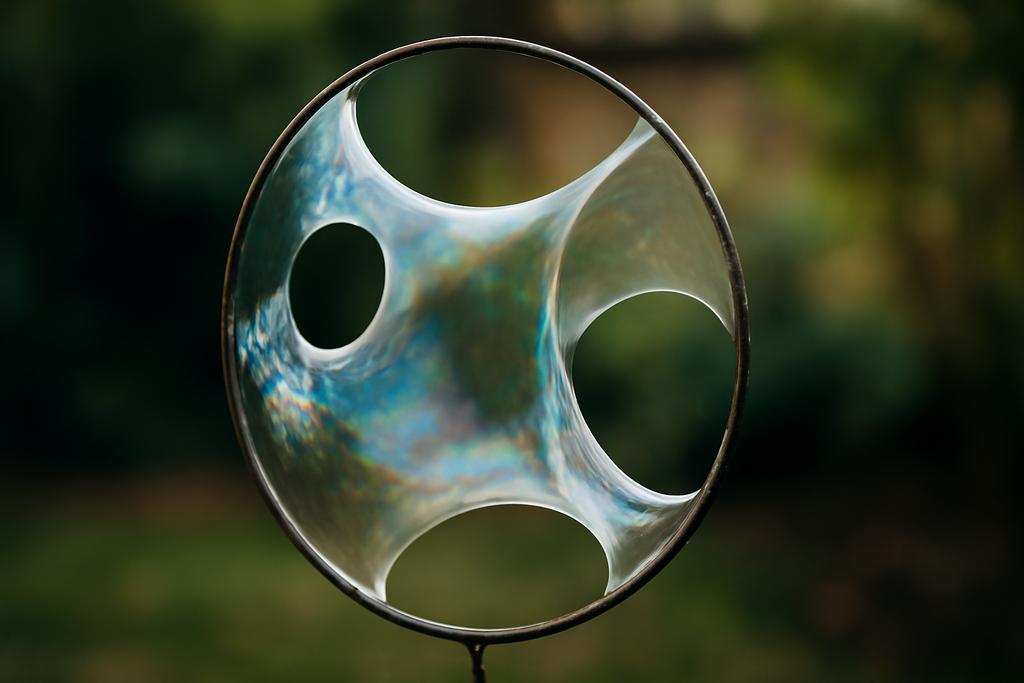Imagine a soap film stretching and evolving in time, its surface area constantly changing. This is essentially what mathematicians describe as mean curvature flow (MCF), a process governing the movement of surfaces based on their curvature. Recent research from Rutgers University, spearheaded by Guanhua Shao and Jiahua Zou, has revealed a fascinating wrinkle in our understanding of this flow, uncovering self-expanders with positive genus. These aren’t just abstract mathematical curiosities; they provide deeper insights into how surfaces behave under MCF, challenging existing conjectures, and introducing unexpected complexities.
Understanding Mean Curvature Flow
The concept of MCF is deceptively simple: a surface evolves in a direction determined by its mean curvature—a measure of how much the surface curves at each point. Think of a balloon slowly deflating; the surface moves inwards at a rate proportional to its curvature. In simpler terms, regions of high curvature shrink faster than flatter regions. MCF can be used to model diverse physical phenomena, from the behavior of grain boundaries in materials science to the way interfaces evolve in fluid dynamics.
One of the striking features of MCF is its tendency to simplify the topology of the surface as it evolves. Over time, handles (or “genus”) usually disappear, reducing the surface to something simpler. This simplification, however, is not always straightforward, particularly near singularities—points where the surface develops infinite curvature and potentially tears or disappears. Understanding the behavior near these singularities is key to comprehending MCF fully.
Self-Expanders: Frozen Moments of MCF
Enter self-expanders: special surfaces that can be viewed as “snapshots” frozen in time within the dynamic evolution of MCF. These surfaces are unusual because their shape remains unchanged under the MCF equations, even as they grow in scale. If you uniformly scale a self-expander, you get another instance of the same self-expander. They’re essentially fixed points within the dynamic flow—solutions that don’t change their fundamental character over time.
Self-expanders, in a sense, represent a balance between opposing forces. The mean curvature, driving the surface to shrink and smooth itself, is counteracted by the outward expansion, keeping the overall shape consistent. This delicate balance makes them exceptional mathematical objects that hold the key to understanding the long-term behavior and singularity formation in MCF.
The Surprising Discovery: Positive Genus Self-Expanders
Shao and Zou’s work shatters a long-held assumption in MCF theory—the belief that self-expanders should only exist with a simple topology. Prior research had mostly focused on self-expanders with zero genus—essentially, simple surfaces like spheres or planes. Shao and Zou’s discovery is that self-expanders can exist with positive genus—surfaces possessing handles, twists, and complex geometries. This adds a new layer of complexity to our understanding of MCF.
Their research reveals the existence of families of self-expanders with arbitrarily high genus—surfaces with an unlimited number of handles. These intricate surfaces, though conceptually complex, are still consistent solutions to the MCF equations. This is remarkable because it illustrates how MCF can maintain complex features even in a state of expanding, self-similar evolution.
Implications and Further Research
Shao and Zou’s work has significant implications for our understanding of MCF. Their discovery directly impacts the long-standing “Genus Reduction Conjecture,” which proposed that the genus of a surface undergoing MCF should strictly decrease as singularities form, unless it is a specific type of singularity. The existence of self-expanders with positive genus shows that the genus can indeed remain unchanged during the expansion phase of the flow, significantly refining the scope of the conjecture.
This research opens up entirely new avenues of research. The existence of these previously unknown self-expanders challenges our current intuition about the evolution of surfaces under MCF. Further research will focus on understanding the broader implications of this discovery, exploring their connections to other mathematical fields, and developing more refined models for MCF and related phenomena.
The study by Shao and Zou not only demonstrates the elegance and surprising richness of mean curvature flow but also highlights the potential for unexpected discoveries even in well-established mathematical areas. The intricacies of these higher-genus self-expanders remind us that there is still much to unravel in our understanding of seemingly simple geometric processes. Their work prompts deeper investigation into singularity formation and the long-term behavior of MCF, potentially leading to innovative applications across various scientific disciplines.










